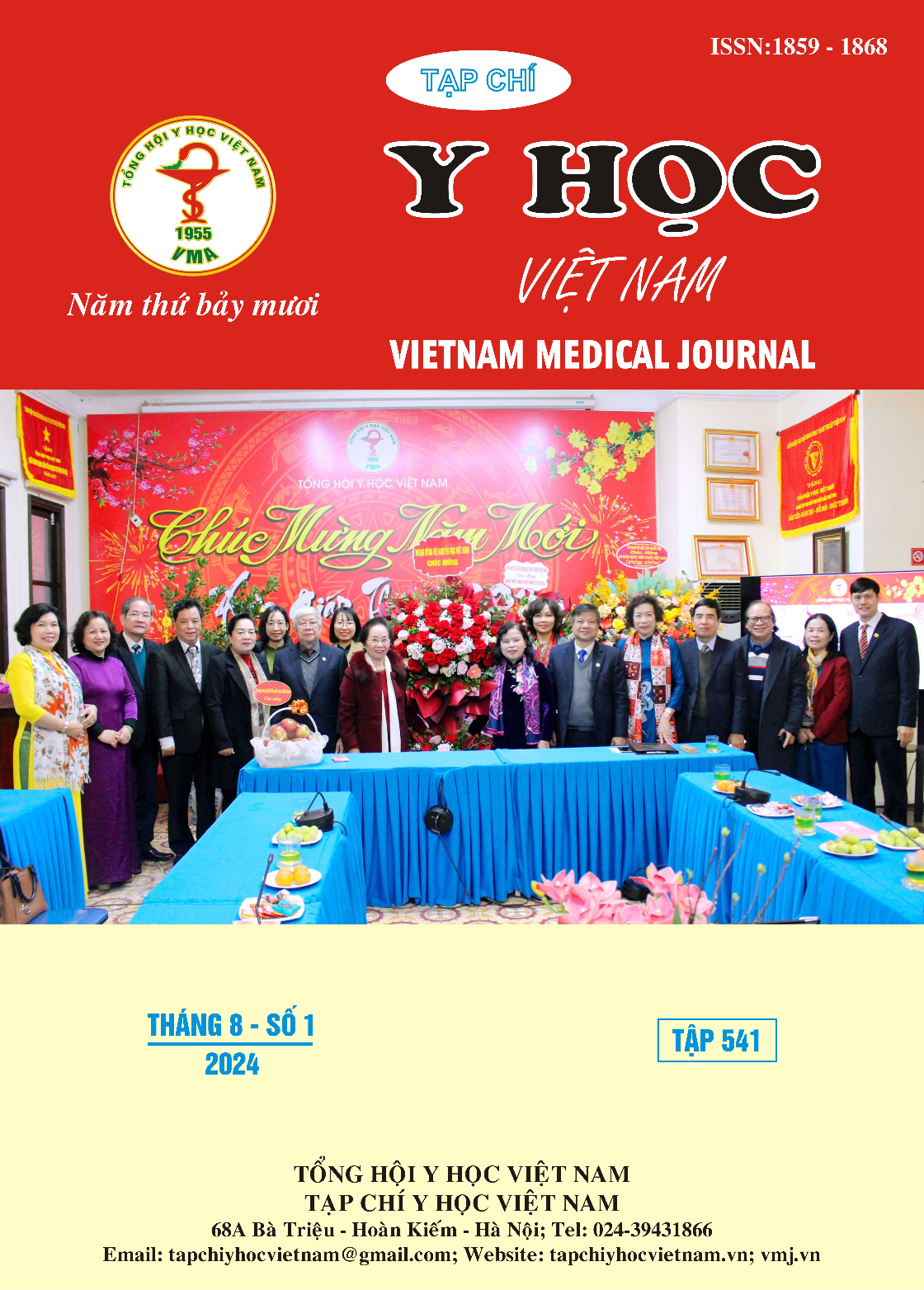COMPLICATIONS RELATED TO CONTINUOUS RENAL REPLACEMENT THERAPY IN CHILDREN AT THE INTENSIVE CARE UNIT IN THE VIETNAM NATIONAL CHILDREN'S HOSPITAL
Main Article Content
Abstract
Objectives: Describe some complications related to continuous hemodialysis in patients treated at the Pediatric Intensive Care Unit (PICU) at Vietnam National Children's Hospital. Method: A descriptive prospective study on a series of patients who received continuous dialysis at the PICU, Vietnam National Children's Hospital, from May 2023 to December 2023. Results: 68 patients received continuous dialysis, the median age of patients was 29 months (IQR: 9-83), and the boy/girl ratio was 1.6/1. The patient's clinical condition was severe, with high PELOD-2 and PRISM-3 vasoactive inotropic index (VIS) (80, 12, and 10, respectively). Septic shock is the most common indication for dialysis, accounting for 52.9%. Median dialysis time was 65.5 hours (IQR: 33.5-131.8). The median PICU stay was 7 days (IQR: 4-14). Common complications in continuous dialysis are Hypotension when connected 66.2%), Electrolyte disorders (hypokalemia 57.4%, hypomagnesemia 48.5%, hypophosphatemia 47.1%), anemia 47,1% and filter blockage 42.6% and thrombocytopenia 39,1%. Conclusion: Common complications in continuous hemodialysis in pediatric patients treated in PICU include hypotension when connected, electrolyte disorders (hypokalemia, magnesium, phosphorus), anemia, and filter blockage. A high PELOD-2 score is an independent factor associated with hypotension when connected to continuous hemodialysis in pediatric patients in the intensive care unit.
Article Details
Keywords
CRRT-related complications, PICU.
References
2. Westrope CA, Fleming S, Kapetanstrataki M, Parslow RC, Morris KP. Renal Replacement Therapy in the Critically Ill Child. Pediatr Crit Care Med. Mar 2018;19(3):210-217.
3. Santiago MJ, Lopez-Herce J, Urbano J, et al. Complications of continuous renal replacement therapy in critically ill children: a prospective observational evaluation study. Crit Care. 2009;13(6):R184.
4. Fernandez Lafever SN, Lopez J, Gonzalez R, et al. Hemodynamic disturbances and oliguria during continuous kidney replacement therapy in critically ill children. Pediatr Nephrol. Jul 2021;36(7):1889-1899.
5. Hajji M, Neji M, Agrebi S, et al. Incidence and challenges in management of hemodialysis catheter-related infections. Sci Rep. Nov 29 2022;12(1):20536.
6. Thadani S, Fogarty T, Mottes T, et al. Hemodynamic instability during connection to continuous kidney replacement therapy in critically ill pediatric patients. Pediatr Nephrol. Sep 2022;37(9):2167-2177.
7. Fealy N, Aitken L, du Toit E, Lo S, Baldwin I. Faster Blood Flow Rate Does Not Improve Circuit Life in Continuous Renal Replacement Therapy: A Randomized Controlled Trial. Crit Care Med. Oct 2017;45(10):e1018-e1025.
8. Miao H, Shi J, Wang C, et al. Continuous Renal Replacement Therapy in Pediatric Severe Sepsis: A Propensity Score-Matched Prospective Multicenter Cohort Study in the PICU. Crit Care Med. Oct 2019;47(10):e806-e813.
9. Baeg SI, Lee K, Jeon J, Jang HR. Management for Electrolytes Disturbances during Continuous Renal Replacement Therapy. Electrolyte Blood Press. Dec 2022;20(2):64-75.


